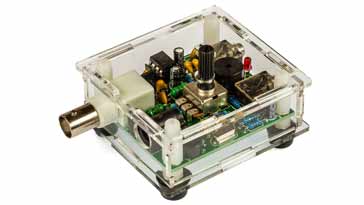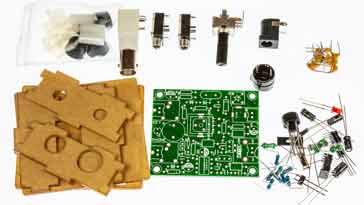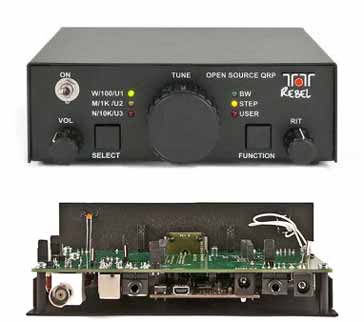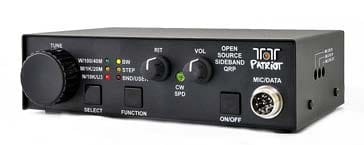What is QRP Amateur Radio: low power operating
QRP or low power amateur radio operation provides many unique challenges for operating and for construction that can be particularly rewarding & enjoyable.
QRP Operating Includes:
QRP basics
QRP equipment
QRP operating
QRP or low power operation has a large and growing band of radio hams who enjoy this aspect of amateur radio as it provides some intersting challenges and the possibility of making your own euipment.
The term comes from the Q codes that were often for Morse, CW and other radio transmissions where QRP means shall I reduce power.

Even many radio amateurs whose licenses enable them to use the full legal power con often prefer QRP operation as it gives them a great sense of satisfaction and provides a whole new world of challenges in terms of amateur radio operating as well as building the equipment.
In view of the enjoyment that QRP operation provides a considerable number of radio amateurs only operate QRP, while others may have high power stations, but also operate in a QRP mode at other times to provide another dimension to their amateur radio operation.
What is QRP?
Essentially amateur radio QRP operation can be defined as operating with low power. There are defined limits for these as given below, but in reality QRP often implies more than this. Not only do people operate using QRP, but many people also build their own equipment.
Another aspect of QRP is that many people also use wire antennas they have built and erected themselves. All of this fits with the general QRP ethos of home construction as well as the low power operation.
In view of the fact that signal strengths are lower than those of stations using higher powers, most QRP operation uses Morse, although this is not exclusively the case. Using Morse transmissions enables contacts to be made when it would not be possible using other modes. Nevertheless SSB and other modes are used for QRP operation.

Note: some of these very cheap kits from China have limited instructions if any, so beware of this, but the cost is often so low this may not be an issue and the instructions can often be found on the web
Making contacts using low power transmitters may not reduce the signal levels by as much as might be expected. For example, reducing the power from 400W down to 4W output represents a reduction of 20dB. A figure of 6dB is generally taken to be equivalent to an 'S' point and therefore this power reduction represents a reduction of just over three 'S' points.
In other words, if a station running 400W (26dBW) was being received at S9 and it reduced the power to just 4W (6dBW), it would still be copied at around S6.
While a QRP station might not be able to operate through many pile-ups, the figures show that it is still possible to make plenty of contacts.
This is proved in reality because every day on the amateur bands where many QRP contacts are made.

Although commercially made, this transceiver uses an Arduino board with open source software to enable experimentation and the addition of further features.
QRP power limits
One of the first questions about QRP operation is how low is low power operation.
The terms QRP has come to mean low power operation and in general the term has been almost universally agreed to mean ham radio operation with 5 W or less output for Morse, CW, and 10 W PEP output or less for SSB.
Although for many years there were differing definitions around the globe, most amateur radio organisations and contests embrace these as the official QRP power limits.
The term QRPp may also be seen sometimes, and this often applies to power levels under one watt.

QRP frequencies
In order to allow QRP stations to make contacts without having to compete with much higher power stations, frequencies are reserved in each of the HF amateur radio bands for QRP operation.
These frequencies, which are shown in the ham radio band plans, should be avoided by high-power stations to allow those using low power to have the minimum amount of interference and hence have the best chance of making their contacts.
While these frequencies are reserved for QRP operation, it does not mean that QRP stations can only use these frequencies, it only means these offer a good chance of contacting other QRP ham radio stations.
| HF bands QRP frequencies | ||
|---|---|---|
| Amateur Radio Band (metres) |
QRP frequency CW MHz |
QRP frequency SSB MHz |
| 160 | 1.843(Eu) 1.810(USA) | 1.910 |
| 80 | 3.560 | 3.690(Eu) 3985(USA) |
| 40 | 7.030 & 7.122(esp USA) | 7.090(Eu) 7.285(USA) |
| 30 | 10.106 & 10.116 | |
| 20 | 14.060 | 14.285 |
| 17 | 18.096 | 18.130 |
| 15 | 21.060 | 21.285(Eu) 21.385(USA) |
| 12 | 24.906 | 24.950 |
| 10 | 28.060 | 28.365(Eu) 28.385(USA) |
These frequencies are more accurately termed centres of activity and are not calling frequencies where the users moves off once contact is established. Especially when using Morse, CW it is possible to accommodate a number of stations around the same frequency.
QRP operation is a facet of amateur radio that has grown in popularity over the years. Despite the advance of technology providing ever increasingly more complex circuits and radios, the appeal of QRP is that it is possible to operate on the amateur bands with low powers, and generally more simple equipment that is often built by the owner of the station. In many ways it gets back to what many see as the basics of the hobby, and in this way it has a great appeal. Accordingly QRP operation will remain a major feature of ham radio for many years to come.
 Written by Ian Poole .
Written by Ian Poole .
Experienced electronics engineer and author.
More Ham Radio Topics:
What is ham radio
Callsigns
Morse code
Voice modes
Digital data modes
QRP operating
Operating awards
Codes & abbreviations
Ham bands overview
Operating via differnet propagation modes
Repeaters
Callsigns
Contact formats
Setting up a shack & buying equipment
Return to Ham radio menu . . .




